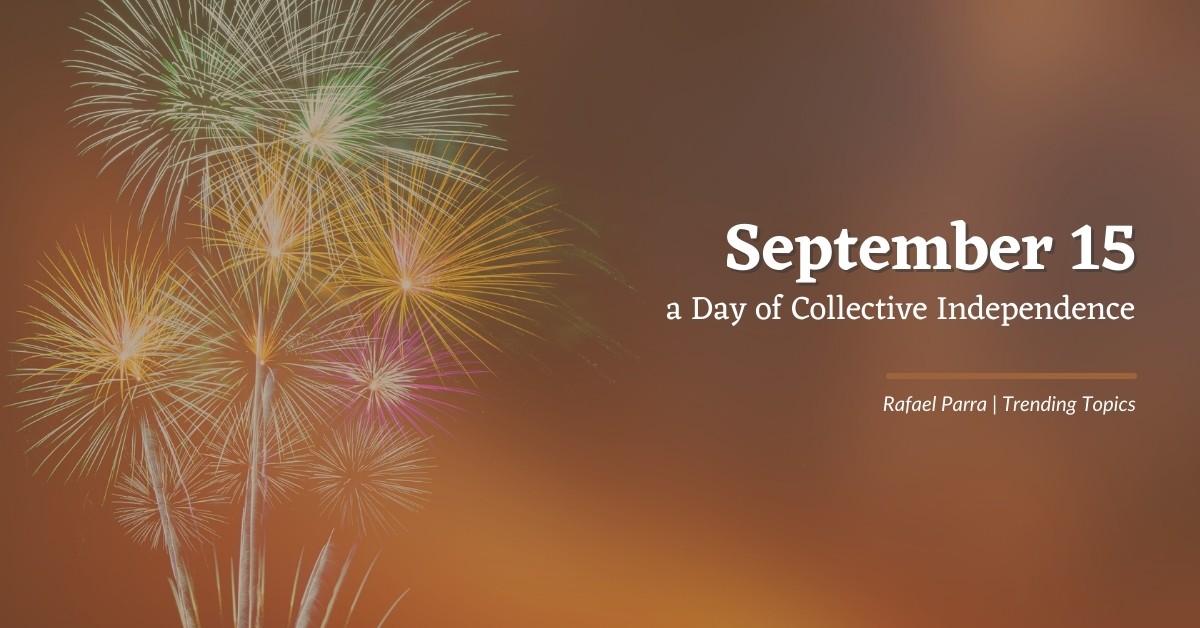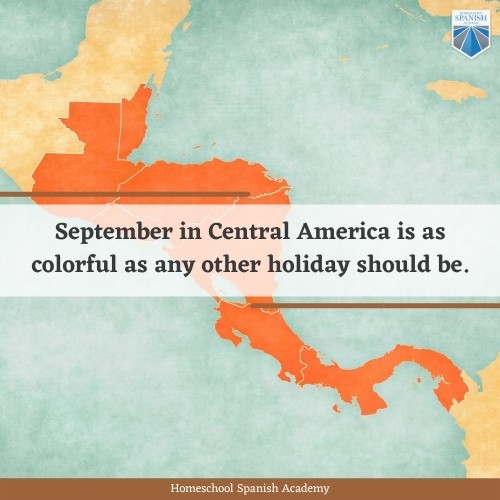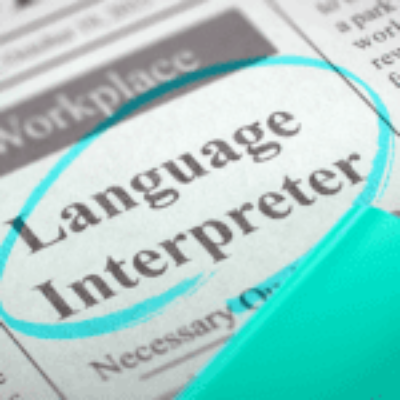
September 15: a Day of Collective Independence
September in Central America is as colorful as any other holiday should be. Weeks before the 15th, the streets, markets, houses, and cars become adorned with hundreds of flags. Cities are dressed in patriotic colors by their citizens. Schools start practicing for the parades and concerts, marching bands can be heard all around town getting ready for the big day when festivities will take place from Guatemala all the way down to Costa Rica. Wearing traditional outfits, eating local dishes, and going out in the streets to have fun are all commonplace practices shared across Centroamérica.
How did this holiday start? To learn this we have to go back in time, almost 200 years ago, before our independence was proclaimed.
A Brief History of Central America’s Independence
September 15, 1821 was an important day for Guatemala, El Salvador, Honduras, Nicaragua, and Costa Rica. Through a relatively peaceful process, these nations claimed their independence from the Spanish government impulsed by the political chaos caused by Napoleon Bonaparte’s attack on Spain in the year 1808. On November 5, 1811, the first revolts occurred in El Salvador, and the rest of the countries mentioned followed suit. A meeting between colonial authorities, renown locals, and religious leaders culminated on September 15 with the termination of Spain’s dominion over the Central American isthmus (Panama was not included and had their independence a few years later). Some historians argue that Central America’s independence is often glossed over, and that the subject is much more complex in nature, so if you’re interested in the historical aspect of Central America’s independence, I encourage you to research and ask Centroamericanos to tell you their stories – most of us will gladly share what we know!
Now, almost two hundred years later, people all over Central America celebrate our independence with joy and pride on the 15th, each country having similarities as well as carrying unique flair to their celebrations. I’ve researched and talked to natives of each country to learn the different ways we commemorate our nations and share them with you so you can know what to expect if you’re visiting!

A torch across five countries
Every year, there’s a tradition in Central America where the people carry a torch from Guatemala to Costa Rica in a relay marathon, passing through El Salvador, Honduras, and Nicaragua. The torch is a symbol of the messengers who rode on horseback spreading the news of independence across all five nations. The ‘flame of independence’ is lit at a monument in Guatemala City called El Obelisco almost a week before independence day, reaching Costa Rica’s old capital, Cartago, on the 15th. This tradition has been done over 50 times to this day. The first time the torch traveled through the 5 countries was in 1959!
Differences between countries
In Guatemala, the torches are central to our celebration. Not only does the Central American torch leave El Obelisco 6 days before the 15th, but we also do torch runs all across the country. On the days prior to independence day, the plaza at El Obelisco is filled with marching bands, food stands, merchants, and people carrying a vibrant livelihood that is then taken all over the country in the form of torches lit by Guatemalan citizens. From small towns to groups of friends and even businesses, these torches are taken to many hometowns in celebration of our free nation. So if you have to go to work on the days before independence day, be sure to leave extra early, because the streets will be filled with groups of people running about with torches in their hands!
Some places like Petén, a lush jungle with ancient ruins in the north side of Guatemala, are far away from the city. What happens if I live in Petén? You might ask. There’s no way a group of people would be willing to run almost 500 kilometers for a torch, so many different hub spots in the country serve as lighting beacons for torches. My dad used to run with the torch back in the day with his coworkers. They would run together and finally get to their office to have lunch there. Since my dad worked in the city and making such a short a relay run between El Obelisco and his office didn’t make much sense, they traveled to Antigua, a neighboring town, and ran from there to the city.
In El Salvador, it’s not unusual for the first section of the celebratory parades to have flags from the other four countries that share the independence date, each flag with its own dedicated car. “They signify how we are all connected as one, as centroamericanos,” as my El Salvadoran friend, who lives in Guatemala, said. He tells me that “In El Salvador, we have a strong sense of identity; we get along well and have very little conflict between one another. My family makes fun of me when I visit, saying my accent has changed, but as you can hear my accent is not Guatemalan. Yet, we have a strong cultural identity and a necessity to preserve what we are.” His accent really wasn’t Guatemalan, if I’m being honest, and his insight was a good indicator of how much he appreciates his homeland.
Independence day in El Salvador starts with parades orchestrated by schools across the country as well as a military parade. They all converge at the national gymnasium, where the president greets the students and the military puts on a show with parachutes and planes flying overhead.
Honduras is very similar to El Salvador; school and military parades are planned and inaugurated with 21 cannonballs shot by the military at 6:00 a.m., signifying the start of the festivities. That’s one loud way to wake up if you ask me! Honduras also has a beauty pageant aspect to its parades, with the palillonas. These are girls dressed in fantasy military uniforms, sporting batons that they wave around, and the best ones often end up featured in the newspaper the next day.
Nicaraguans are very organized and meticulous when it comes to celebrating their independence. We all decorate our streets as soon as September starts and celebrate for three days until the 15th. Nicaraguans go a step further, and schedule events all throughout the month in order to celebrate their independence! Ceremonies begin on the first of September with an inauguration that features politicians, ambassadors, and students in tandem with the marching bands that are reminiscent of these celebrations. The following days are ceremonies dedicated to the torch that has been traveling all the way from Guatemala, which Nicaraguans pass on to Costa Rica on the 13th. The next day, there is an event held to commemorate and give medals to the best students and teachers in the country, followed by marching bands from schools, the military, and even the police! Aside from the common practices across Central America, Nicaraguans have the tradition of reading the Declaration of Independence on all schools on the 15th.
Just like the torch travels through all five countries and arrives at Cartago, we finally arrive at Costa Rica, where the celebration begins with the receiving of the torch. Costa Ricans pride themselves on their pacifist beliefs, having no military forces to speak of. After 1915, the military presence in their parades started to fade away, until the abolishment of the army removed them altogether. This altered the focus of the independence day celebrations, moving it more towards the youth. The evening before the 15th, there is an event called Desfile de Faroles, or Lantern Parade, where kids from all over Costa Rica build glowing lanterns with recycled materials. They decorate the lanterns with patriotic symbols and enjoy the warm light of their artistic expression while enjoying the local food.
All these different ways to express freedom sure make me want to go follow the torch across all five countries! It’d be great to experience what is not just a celebration of our past, but a unifying act that connects us and our history. It’s very interesting to see how the differences in celebration are influenced by who we are and where we come from. The torch leaves from Guatemala, so we center our festivities around the act of lighting and carrying the torch. In Costa Rica, the celebration centers around receiving the torch.
So, in a way, Independence Day in Centroamérica is a series of parades, shows, and traditions led by a single flame traveling both in the torch and in the hearts of the citizens of Centroamérica.
Connect with Centroamericanos Today!
You can also connect with Centroamericanos by learning to speak Spanish. We always have something nice to share, and it’s a pleasure to show other nations what we’re all about. Get a free class at Homeschool Spanish Academy today!

Want to learn more about Latin American culture? Check out our latest posts!
- The Best Spanish Learning Podcasts for Kids
- 12 Contemporary Spanish Female Artists Who Will Empower You
- The History and Significance of Guatemalan Jade
- Are Bilingual Children More Likely to Experience a Speech or Language Delay?
- Top 10 Places to Visit in Guatemala City, Guatemala
- Learn About Hispanic History: Were Hispanics Slaves?
- Celebrating Culture and Joy: The Magic of Carnival in Spanish-Speaking Countries
- 15 Mouth-Watering National Dishes of Latin America
- Top 10 Science Fiction Spanish Books for Adults (with PDFs) - August 22, 2024
- 200+ Beginner Spanish Vocabulary Words PDF: Learn Spanish Fast! - August 15, 2024
- 60 Best New Year Quotes in Spanish 2024 - January 18, 2024




